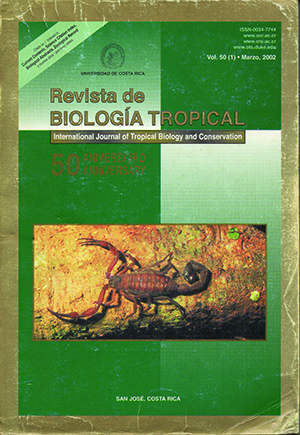Abstract
The objective of this study was to determine whether seeds of the pioneer tree Heliocarpus appendiculatus possess photoblastic dormancy. Seeds from nine trees were collected in Los Tuxtlas, Mexico. In order to test for the presence of photoblastic dormancy, germination experiments were carried out separately on seeds of each individual tree. The seeds from each tree were sown and subjected to four light treatments: fluorescent white light, red light (660 nm), far red light (730 nm), and darkness. A total of 50 seeds were sown in each plastic Petri dish (three replicates per treatment) on an agar solution. Experiments were carried out at a constant temperature of 20oC, and a 12:12 hr (L:D) photoperiod. In addition, seeds of three individuals were sown on agar and subjected to a light quality gradient from red to far red (1.1 - 0.2). Results show that final germination percentages of seeds were unaffected by light quality in all individuals. Nevertheless, germination was delayed by 24 hr in the seeds of four individuals under the far red light treatment. By the end of fourth day, final germination did not differ among treatments. Further, germination of the three individuals under the red/far red gradient was unaffected. Seeds of H. appendiculatus lack photoblastic dormancy and germination behavior can not be used to explain the absence of seedlings below the canopy. We propose that this absence is due to the failure of the seedlings to establish themselves under the canopy.##plugins.facebook.comentarios##

This work is licensed under a Creative Commons Attribution 4.0 International License.
Copyright (c) 2002 Revista de Biología Tropical
Downloads
Download data is not yet available.


